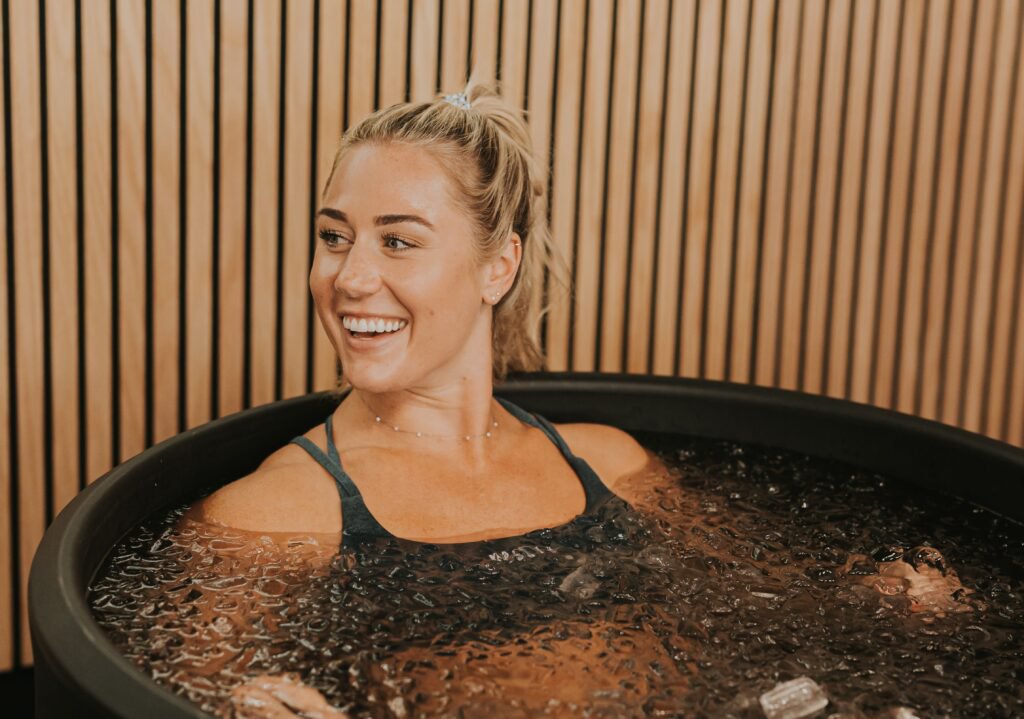Discover the ultimate recovery experience with our new Ice bath service. Designed to rejuvenate your body and refresh your mind, our Ice baths offer both physical and mental well-being.
What does the ice bath offer?
- Muscle recovery: Whether you're an athlete, or someone looking for relief from everyday stress and muscle pains, ice baths can speed up muscle recovery by reducing inflammation and soreness.
- Better circulation: Stimulate blood flow, promoting better circulation throughout your body. This can lead to improved cardiovascular health and a rejuvenated sense of energy.
- Mental Clarity: Experience a rush of endorphins and a wave of mental clarity as you step into the cold. Ice baths boost mood, relieve symptoms of anxiety and depression, and leave you feeling refreshed and focused.
- Boosting immunity: Strengthen your body's natural defenses by subjecting it to the controlled stress of cold exposure. Ice baths can boost immune function, helping you stay healthy and resilient

Our commitment to your comfort and safety
At Royal CrossFit, we prioritize your comfort and safety above all else. Our Ice baths are meticulously maintained to ensure optimal hygiene and temperature control. Our staff will guide you through the process, providing advice and support every step of the way.
Q&A
- How long should I stay in an Ice tube? It is recommended to start with a shorter duration, around 3 to 4 minutes, for your first sessions, gradually increasing the time as you get more used to the cold. Aim for 8 to 10 minutes or longer, depending on your stamina and goals
- What temperature should the water be for an ice bath?
A good starting point for an ice bath is around 10 to 15 degrees Celsius. As you get more used to ice baths, you can gradually lower the water temperature. - Should I shower before or after an ice bath?
Showering before an ice bath is mandatory for hygiene reasons and to help your body prepare for the cold plunge. Showering before an ice bath helps remove dust, sweat and bacteria from your skin, ensuring that you enter the bath clean. This can help prevent water contamination and reduce the risk of skin infections or irritations. A lukewarm or cool shower before an ice bath can also help gradually lower your body temperature, making the transition to cold water more comfortable. - How often should I take ice baths? The frequency of ice baths depends on individual goals and tolerance levels. In general, aim for 2 to 3 sessions per week, spaced out to allow for adequate recovery between sessions.
- What is the procedure for taking an ice bath at the gym?
1-Make an appointment. Our staff should know the time you want to ice therapy 20-30 minutes before so we can prepare the ice tub.
2-Take a shower. Showering before an ice bath is mandatory. Both for hygiene reasons and to help your body prepare for the cold plunge. The shower before a frozen
bath helps remove dust, sweat and bacteria from your skin, ensuring you enter the bathroom clean. This can help prevent water contamination and reduce the risk of skin infections or irritations. A lukewarm or cool shower before an ice bath can also help gradually lower your body temperature, making the transition to cold water more comfortable. It can also help relax your muscles and prepare your body for the shock of cold immersion.

- What is the cost ;
The following cards indicate the cost for the Ice Bath. The most sessions done in a single Ice bath are 3. Then the water is renewed and the container is cleaned. Also in the packages of 2 and 3 people one enters after the other.
1 person
2 persons
3 persons
- In which cases should I not take an ice bath or do I need to consult a doctor before using it?
It is important for people with any underlying health conditions or concerns to consult a qualified healthcare professional before attempting ice baths or any other form of cold water immersion. Additionally, always listen to your body and stop the activity if you experience any discomfort, pain, or side effects. The following categories of diseases should avoid ice baths.
-Heart conditions: People with heart disease or high blood pressure, a history of heart attacks, should avoid ice baths or consult a cardiologist before attempting such a thing.
-Respiratory problems: People with respiratory conditions, such as asthma or chronic obstructive pulmonary disease (COPD), may experience difficulty breathing in a cold water environment.
-Raynaud's disease: People with Raynaud's disease, a condition characterized by reduced blood flow to the extremities in response to cold or stress, may experience severe discomfort or complications from immersion in cold water.
-Pregnancy: Pregnant women should avoid ice baths, especially in later stages of pregnancy, as sudden changes in body temperature can pose risks to both the mother and the developing fetus.
-Open wounds or infections: People with open wounds, cuts or infections should refrain from ice baths to prevent further irritation, infection or complications. Immersion in cold water can slow wound healing and
increase the risk of infection.
-Neurological conditions: People with neurological conditions, such as multiple sclerosis (MS) or peripheral neuropathy, may have reduced sensation or nerve function, making them more susceptible to cold-related injury or discomfort during ice baths.
-Seniors: especially those with underlying health conditions or reduced mobility, should be cautious when considering ice baths. Age-related changes in circulation and thermoregulation may increase
the risk of injury or adverse effects.
-Children: Children and teenagers should avoid ice baths, as their developing bodies may be more sensitive to extreme temperatures and less able to regulate body heat effectively.
-People with reduced immune function: People with weakened immune systems, such as those undergoing chemotherapy, organ transplant recipients, or people with autoimmune disorders, should avoid ice baths to reduce the risk of infections or immune-related complications.





 2021 Copyright Royal CrossFit, All rights reserved
2021 Copyright Royal CrossFit, All rights reserved